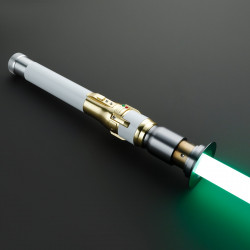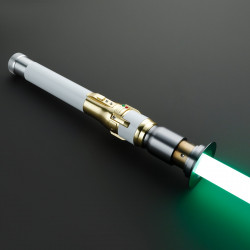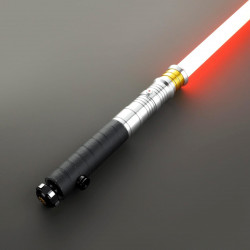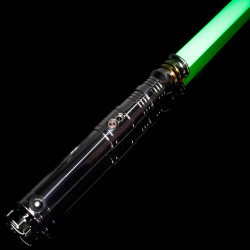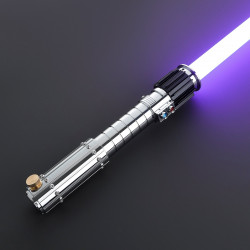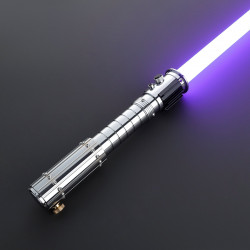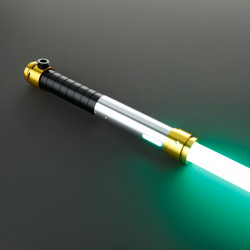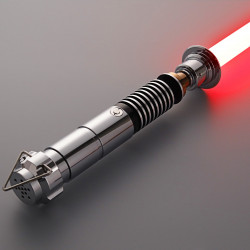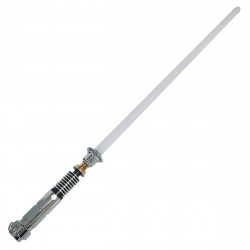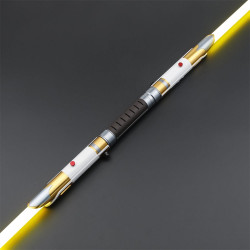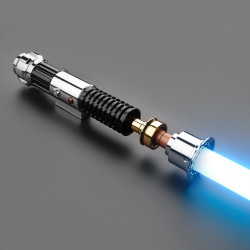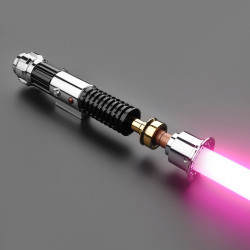
Jedi Ranks in Star Wars: A Complete Guide
The levels and roles of the Jedi Order, a large and complex organization that has developed over millennia, are designed to represent the abilities, duties, and commitment to the Force of its members. This article examines the Jedi Order's organizational structure, outlining its foremost ranks, specialized career routes, and military titles. In maintaining justice, peace, and the Jedi values, every rank—from the esteemed Grand Masters to the accomplished Jedi Commanders—has a unique and crucial duty to play.
The first part of the article highlights the growth and importance of the primary Jedi ranks, including Initiates, Padawan, Knights, and Masters. The article then explores the several specialty branches that Knights can choose from, such as the combat-oriented Guardians, the diplomatic Consular, and the adaptable Sentinels. Finally, it analyzes the military responsibilities the Jedi played throughout the Clone Wars, emphasizing their leadership in the Grand Army of the Republic and the catastrophic Order 66 events that led to the Jedi Order's demise.
1. What Are the Ranks in the Jedi Order?
The Jedi Order has the following ranks: Jedi Knight, Jedi Padawan, Jedi Initiate, Grand Master, Master of the Order, and Jedi Master.
1.1 Jedi Grand Master
Traditionally, the oldest and most sage Jedi were given the title of Grand Master, also known as Grand Jedi Master. The Grand Master was the leader of the Jedi Order, and the Master of the Order was in charge of the Jedi High Council. This title was held by Jedi Masters Yoda, Pra-Tre Veter, and Xo Lahru during the High Republic Era. During the last years of the Galactic Republic, Yoda held the position of Grand Master and was among the few Jedi who survived the Great Jedi Purge at the end of the Clone Wars.
Although one person might be both Grand Master and Master of the Order, the two positions were separate. In order to complete the Jedi training cycle, the Grand Master humbly led the younglings, the youngest members of the Jedi Order. A Grand Master directly training a Padawan was uncommon and highly valued, according to Tera Sinube. There were times when the Jedi Order had several Grand Masters working at the same time.
1.2 Master of the Order
The elected head of the Jedi High Council was referred to as the Master of the Order, often known as the Grand Master of the Jedi High Council or Master of the Council. The Grand Master was the general head of the Jedi Order, and this position was different from that. The High Council's twelve members voted unanimously to select the Master of the Order.
Yoda and Mace Windu were Jedi Masters who served in this capacity at various points in the late Galactic Republic. Although the High Council made most of the decisions, the Master of the Order frequently met informally with politicians, Jedi Knights, and leaders from other systems to discuss issues and share ideas.
1.3 Jedi Master
A Jedi Master was a title bestowed upon knowledgeable and strong Jedi, many of whom held significant leadership positions within the Jedi Order. Anakin Skywalker was an important exception to the rule that only Jedi Masters could serve on the Jedi High Council. Despite being a Jedi Knight, Skywalker was nominated to the Council as a representative of Supreme Chancellor Sheev Palpatine.
After exhibiting extraordinary preparedness, expertise, and dedication to the Force, a Jedi Knight was promoted to the rank of Jedi Master. This promotion indicated a Knight's readiness for more responsibility responsibility in the Order, which needed approval from the Jedi Grand Master. Being promoted to Jedi Master was a noteworthy accomplishment that resulted from years of hard work and personal development.
Jedi Masters were supposed to continue their studies of the Force after being promoted in order to expand their knowledge and skills. The Jedi High Council believed that the rank's ongoing self-improvement was an essential duty. Jedi Masters were also crucial in helping younglings learn the Force in the early years; subsequently, either a Jedi Knight or a Jedi Master would frequently offer direct mentoring.
Jedi Generals were Jedi Masters and Jedi Knights in the Republic Military during the Clone Wars, and Jedi Commanders were Padawan. The great expectations of their status required Jedi Masters to react with wisdom and seriousness in severe situations.
1.4 Jedi Knight
After completing their training, which included attending the Jedi Academy, receiving one-on-one mentoring as a Padawan, and passing the Jedi Trials, members of the Jedi Order were known as Jedi Knights.
To preserve harmony and Order in the Galactic Republic, Jedi Knights, who were full members of the Order, accepted tasks from the Jedi Councils. Jedi Knights were the most well-known rank among the general public, representing the bulk of the Order, and many people called any Jedi a "K" right.
".5 Jedi Padawan
A Force-sensitive person schooled under the supervision of a Jedi Knight or Master during the Padawan stage of Jedi training. They are also known as Padawan learners, Jedi apprentices, or just apprentices. Prior to the Clone Wars, a Jedi Master would choose their Padawan; however, the Jedi High Council started designating trainees. For Padawan's to become Jedi Knights, they had to finish their training and pass the Jedi Trials.
Padawan's were trained in combat and acted as military leaders of clone troops during the Clone Wars. But Supreme Chancellor Sheev warstone Order 66, which was implemented at the end of the conflict, forced the clones to turn on the Jedi. However, some Jedi managed to live. Luke Skywalker received his Jedi training under the guidance of Yoda and Obi-Wan Kenobi, two survivors. Eventually, Skywalker tried to restore the Jedi Order, but Ben Solo gave in to the evil side and the majority of his apprentices were slaughtered. Years later, the Jedi tradition was carried on by Rey, a scavenger from Jakku who apprenticed himself to both Luke Skywalker and Leia Organa.
1.6 Jedi Initiate
Younglings, another name for Jedi Initiates, were Force-sensitive kids chosen by the Jedi Order from different races throughout the galaxy. They received their initial Jedi arts instruction at the Jedi Temple on Coruscant at an early age. They also traveled to the planet Ilum for their education, where they took part in the Gathering, a revered rite of passage where younglings choose their kyber crystals to make their lightsabers. During his lengthy reign, Grand Master Yoda frequently taught younglings the ways of the Force before they progressed to the next level of instruction. To become Padawan's, younglings had to pass the Initiate Trials, which prepared them for apprenticeship under Jedi Masters or Knights.
The Dark Lord of the Sith, Darth Sidious, plotted existential threats against the Jedi Order during the Clone Wars. Sidious organized the kidnapping of several Force-sensitive infants who were to grow into younglings as part of his schemes to create a force of dark-side acolytes. Even though the Jedi foiled this plot, Order 66 and the emergence of the Galactic Empire ultimately undid their efforts to safeguard the next generation, resulting in the younglings' deaths and the terrible loss of the Jedi Order.
2. What Are the Specialized Ranks Within the Jedi Order?
Within the Jedi Order, Padawan's had three distinct career options to choose from after reaching the rank of Jedi Knight. When freshly promoted Knights passed the Jedi Trials, they might become Jedi Guardians, Jedi Consular, or Jedi Sentinels, depending on their abilities, preferences, and capabilities.
2.1 Jedi Guardian
The Jedi Order had three main branches, one of which was the Jedi Guardian. Jedi Guardians were renowned for their battle skills and were viewed as the light side counterparts of Sith Warriors. Although the Guardian Jedi ace Crix Sunburris first explicitly detailed their duty within the Order in The Jedi Path: A Manual for Students of the Force, it has remained mostly unchanged throughout history.
2.2 Jedi Consular
A Jedi Consular was a mediator and diplomat who worked to advance peace and harmony within the Galactic Republic under the direction of the Council of Reconciliation.
Jedi Consular preferred to study the mysteries of the Force and only used their lightsabers as a last resort. The Jedi Seer Sabla-Mandibu initially recorded their duty in The Jedi Path: A Manual for Students of the Force, although it has primarily stayed constant throughout history.
2.3 Jedi Sentinel
Jedi Sentinels represented a middle ground between the Jedi Consular' and Jedi Guardians' ideologies. Although Sentinels were skilled fighters with a strong grasp of the Force, they set themselves apart by combining non-Force-based capabilities like computers, security, stealth, demolition, repair, or medical.
They frequently approached problems with these practical talents in mind. For example, a Sentinel would use tools or creativity to pick the lock, but a Guardian may tear down a closed door, and a Consular might utilize the Force to unlock it.
Throughout the Order's history, the Jedi Sentinel's function has ability and inventiveness.
3. What do Jedi hold the Military Ranks?
Jedi are classified as High Generals, Generals, and Commanders.
3.1 High Jedi General
Within the Grand Army of the Republic, the Jedi held the distinguished military rank of High Jedi General or simply High General. During the Clone Wars, those who achieved this rank led one of the ten Systems Armies. One prominent figure to hold the position of High Jedi General was Jedi Master Obi-Wan Kenobi.
3.2 Jedi General
The Grand Army of the Republic had Jedi Generals as its top military officers. Originally used informally, the title was codified in 22 BBY at the beginning of the Clone Wars and was only given to Jedi Knights, Jedi Masters, and members of the Jedi High Council, which is the body that rules the Jedi Order. Jedi Generals fought the Confederacy of Independent Systems as the Republic's of the Republic's clone trooper army.
By the year 19 BBY, the Jedi were overextended throughout the galaxy. Supreme Chancellor Sheev Palpatine issued Order 66, which ordered the clone troopers, who were designed to follow orders without question, to destroy the Jedi Order as the war came to a close. Numerous unwary Jedi generals were immediately put to death by their soldiers as a result of this betrayal. Grand Master Yoda and Obi-Wan Kenobi were among the few who survived and went into hiding.
After much of the Jedi leadership was destroyed, Palpatine—who was actually the Sith Lord Darth Sidious—announced his conquest as the Emperor of the Galactic Empire. Darth Vader, Palpatine's enforcer and apprentice, was Anakin Skywalker, a former Jedi General Palpatine's to the dark side.
3.3 Jedi Commander
Jedi Commanders served as officers in the Grand Army of the Republic during the Clone Wars. This rank was given to Jedi Order Padawan's in 22 BBY, shortly after the First Battle of Geonosis, the first conflict of the Clone Wars. As commanders, they had leadership over the Grand Army's clone troopers, including clones with positions such as Clone Captain. Jedi Generals, who were Jedi Knights and Masters with extensive training, were superior to Jedi Commanders, just as they were within the Jedi Order itself.
Jedi Commanders usually worked in tandem with their general-level masters, although they were sometimes expected to carry out separate missions when necessary. As the Galactic Republic and Confederacy of Independent Systems battle came to an end in 19 BBY, Order 66 betrayed the Jedi officers. This military Order declared all Jedi to be state traitors, which caused clone troopers to turn against and kill their Jedi commanders. Some Jedi managed to survive and went into hiding, while many Jedi died during the purge. Both Commander Caleb Dume and former Commander Ahsoka Tano, who subsequently played significant roles in the Alliance to Restore the Republic under the Galactic Empire's rule, were among the survivors.
Empire's

